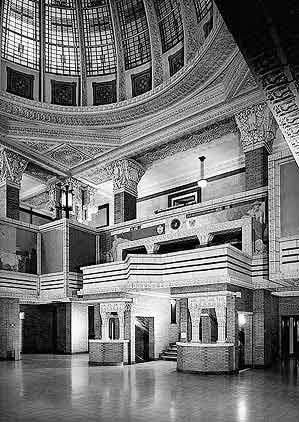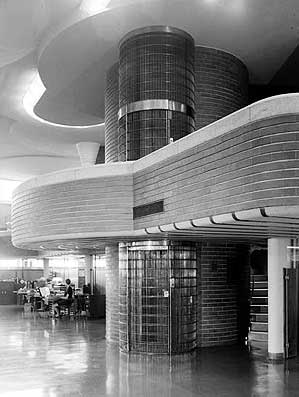

| Individual Space | |
| Related Spaces | |
| Interior Features | |
| Surface Materials + Finishes | |
| Exposed Structural Elements | |
| checklist |


The third step involves looking at the interior. This needs to be done slowly in order to correctly identify its distinctive visual character. These are the visual aspects to be considered:
• individual spaces and spaces that are related to each other
• interior features that are part of the building
• distinctive surface materials and finishes
• any exposed structural elements
First, remember that the shape of a space may be an essential part of its character. In office buildings, this is generally the vestibules, lobbies or corridors. If the shape or plan is altered, the interior character is changed. With some buildings, the relationship between spaces creates a visual linkage, such as in a hotel – from the lobby, to the grand staircase, to the ballroom. Closing off the openings between those spaces would change the character dramatically.
Distinctive surface materials and finishes may be an aspect of the visual character, such as wooden parquet floors, pressed metal ceilings, wallpaper, or grained doors. Exposed structural elements are less frequent (rooms with decorative ceiling beams or exposed posts, beams, and trussses), but may be present in a church or train shed or factory.
Finally, so-called secondary spaces are not usually perceived as important to the visual character of the building. This is quite often where change can take place within a rehabilitation project.